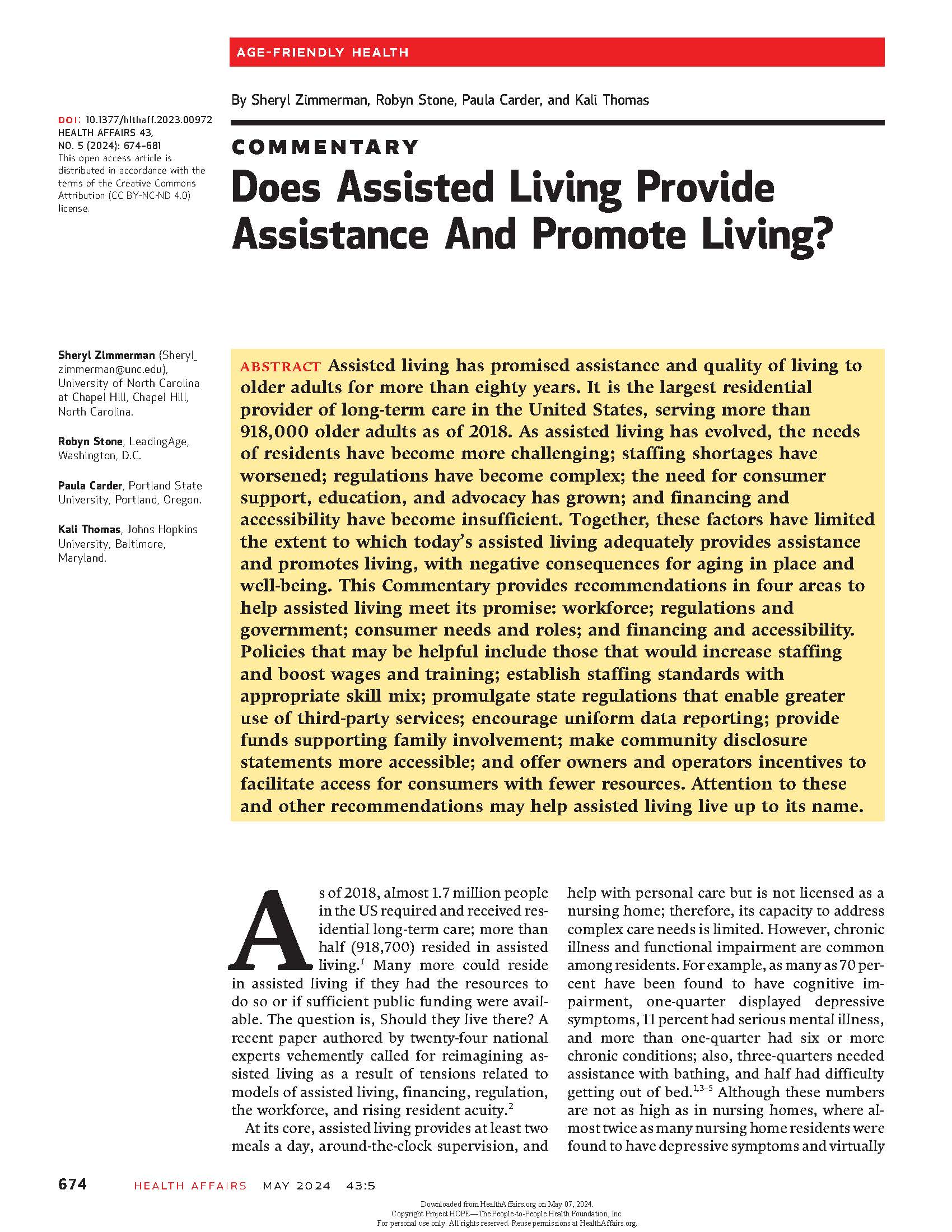Background
Residents of assisted living facilities (ALF) transfer to a nursing home when they require a higher level of care, but limited research has examined risk factors for transfer to a nursing home. The aims of this study were to identify (1) baseline factors associated with transfer to a nursing home and (2) time-varying factors associated with transfer to a nursing home over 8 years, using a national dataset from the National Health Aging Trends Study (NHATS).
Methods
NHATS participants were included in this study if they: (1) resided in ALF from Round 1 (2011) through Round 8 (2018); (2) completed the sample person (SP) interview at baseline; (3) were admitted to ALF at age 65 years or older. We conducted Cox proportional hazards regression to examine candidate predictors (difficulty with basic activities of daily living (ADL), chronic conditions, hospitalization, sleep disturbances, mental health, physical performance, self-reported health, participation in social and physical activity, and sociodemographic) associated with transfer to a nursing home. Employing backward elimination, we built parsimonious final models for analysis.
Results
The analytic sample included 970 participants of whom 143 transferred to nursing homes over 8 years. Those who had a better physical performance at baseline (HR = 0.83, 95% CI = 0.79–0.88) and were college educated (HR = 0.58, 95% CI = 0.36–0.92) demonstrated a significantly lower risk for transfer to a nursing home over 8 years. Residents who maintained physical activity (HR = 0.56, 95% CI = 0.37–0.86), better physical performance (HR = 0.87, 95% CI = 0.80–0.94), and difficulty with fewer basic ADLs (HR = 1.13, 95% CI = 1.02–1.26) were at lower risk for transfer to a nursing home over 8 years.
Conclusions
Our findings can be used to identify older adults in ALFs at risk of transfer to a nursing home. Strategies to promote physical function and physical activity could avoid/delay the need to transfer. Helping older residents to age in place will have important health and economic benefits.

Center for Excellence in Assisted Living CEAL@UNC
Advancing the well-being of the people who live and work in assisted living through research, practice, and policy.

